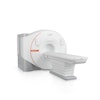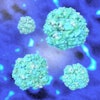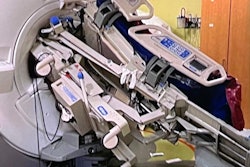Functional MRI confirms that a baby's smell -- whether or not the infant is a mother's own -- is a "scent of cuteness" that prompts caretaking behavior, according to a group of German researchers.
A team led by Laura Schäfer, PhD, of Technische Universität Dresden in Germany, reported that "infant body odors enhance [the blood-oxygen-level-dependent (BOLD)] signal and functional connectivity within olfactory, pleasure and reward networks." The study findings were published June 8 in Social Cognitive and Affective Neuroscience.
"The smell of [one's] own baby is a salient cue for human kin recognition and bonding," Schäfer and colleagues noted.
On a neural level, the perception of visual cuteness (i.e., "baby schema" such as big eyes, small noses, and plump cheeks) is associated with "fast and specific function responses" in the orbitofrontal cortex (OFC), the investigators explained.
"The OFC is an essential hub in a network coding pleasure … [and] activation of the pleasure network, e.g., by cuteness perception, is associated with wanting, liking, and reward learning," they wrote.
Schäfer's team conducted a study that included 20 women with normal smell capacity and a child between the ages of 0 and 3 and 20 women of normal smell capacity without children. All of the women were exposed to infant and postpubertal body odors taken from clothing while in an MRI scanner (25 infant and 13 postpubertal [ages 14 to 18 years] odors were sampled). The mothers smelled body odor samples of an unfamiliar infant matched to sex and age of their own and of an unfamiliar sex-matched child of postpubertal age. The team tracked study participants' olfactory network (amygdala, piriform cortex, thalamus, hippocampus, posterior cingulate cortex, orbitofrontal cortex, anterior cingulate cortex, insula); pleasure network (lateral orbitofrontal cortex, mid anterior orbitofrontal cortex, medial orbitofrontal cortex, nucleus accumbens, ventral pallidum); and reward network (periaqueductal gray, parabrachial nucleus, ventral tegmental area, caudate, putamen).
The researchers asked study participants to use a 0 to 100 scale (0, "not pleasant at all," and 100, "very pleasant") to respond to the following questions:
- How pleasant was the odor?
- How intense was the odor?
- How much would you like to smell the odor again?
The authors found that for all study participants, the odor of infants compared with that of postpubertal children led to a significantly larger BOLD signal increase in the reward and in the pleasure network (t-score, reward network: 39 for postpubertal odor samples and 192 for infant odor samples; t-score, pleasure network, 39 for postpubertal odor samples and 1,762 for infant odor samples. A score of two or higher is statistically significant).
"Our results demonstrate that infant body odors enhance BOLD signal and functional connectivity within olfactory, pleasure, and reward networks," the authors concluded. "This neural signature is stronger for infantile than postpubertal body odors, suggesting that infant body odors function as a specifically rewarding cue and are processed in a similar fashion to infant faces."
The complete study can be found here.




















